Do you want to learn how to plow a garden like a pro? If so, you have come to the right place! In this article, we will discuss everything you need to know about plowing your garden. We will answer some of the most common questions people have about this topic, and provide helpful tips on how to get the job done right. So whether you are a beginner or an experienced gardener, read on for all the information you need to know about plowing your garden!
What is Garden Plowing?
Garden plowing is the process of preparing a garden bed for planting. This typically involves breaking up the soil, removing weeds, and adding amendments such as compost or manure.
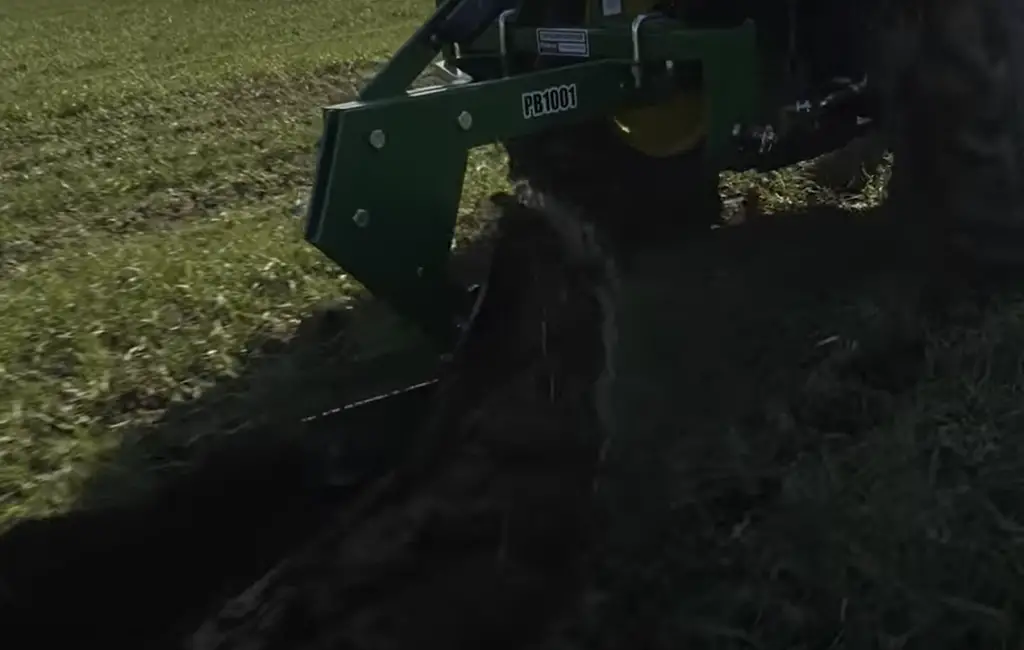
Some farmers plow the soil after the harvest to help prepare the field for the next season. This is done to kill any remaining weeds, and to help aerate the soil.
A rototiller is a power tool that has spinning blades that quickly break up the soil. You can rent a rototiller from most hardware stores or garden centers.
If you have a small garden, you may be able to get by with using a shovel or hoe to do the work yourself. But for larger gardens, a rototiller will save you hours of backbreaking work. We will discuss how to use both methods a little later. [1],[2]
Differences Between Plowing and Tilling
The terms plowing and tilling are often used interchangeably, but there is a difference.
Tilling is less invasive than plowing because it only turns over the top layer of soil. This makes it ideal for preparing seedbeds or planting areas where you don’t want to disturb the root systems of existing plants.
Plowing, on the other hand, is more aggressive and breaks up all layers of soil. This is an effective way to deal with weeds, loosen compacted soil, and turn over large areas of land.
Which method you choose will depend on the condition of your soil and what you’re trying to accomplish. For example, plowing is a good way to prepare the soil after the harvesting process. For crop cultivation, tilling is usually the preferred method. [1],[2]
Benefits of Plowing
You might have an idea of what plowing is, but do you know the benefits? Here are a few reasons why plowing a garden is so essential.
It restores the structure of the soil
The soil is full of living organisms, minerals, and other matter. Over time, the soil can become compacted and lose its structure. This can happen due to weathering, erosion, or even foot traffic. Plowing helps to restore the structure of the soil by breaking up clumps and creating pores that allow air and water to move freely through the soil.
A healthy soil structure is important for plant growth because it allows roots to penetrate deeply into the ground and access vital nutrients. Plowing also helps prevent waterlogging and makes it easier for plants to withstand drought conditions.
It kills weeds
Weeds compete with your plants for space, water, and nutrients. By plowing your garden bed before planting, you can kill existing weeds and prevent new ones from germinating.
When you plow, the blades of the tractor or rototiller chop up the weed roots. This makes it difficult for them to grow back.
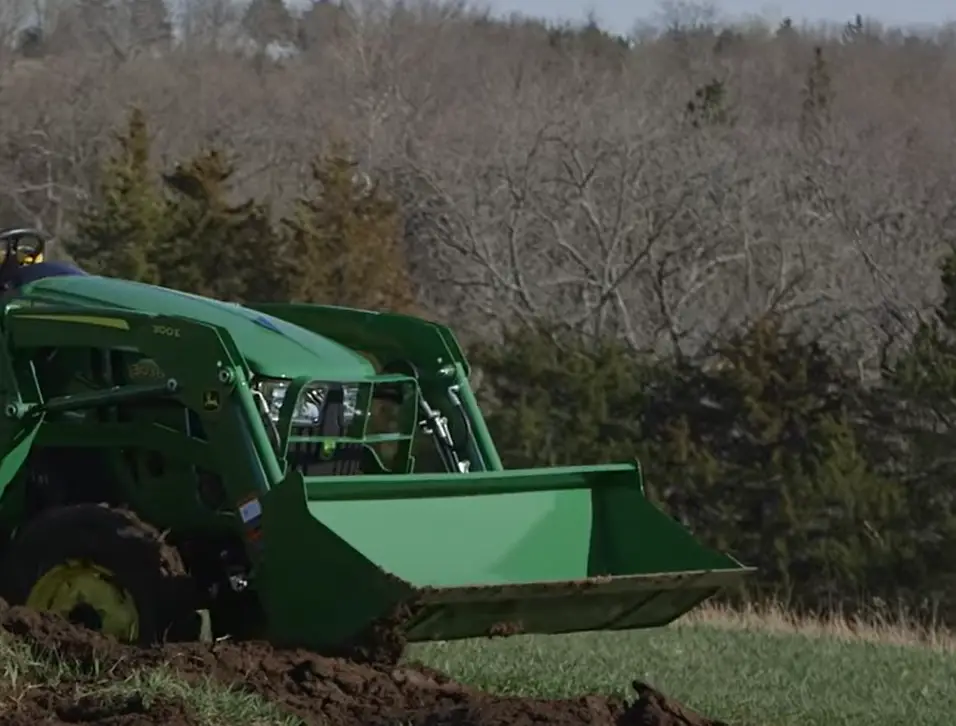
If you’re starting a garden from scratch, plowing is an effective way to control weeds in your planting area. Just be sure to wait until all danger of frost has passed before you start plowing.
It aerates the soil
Plowing helps to aerate the soil by breaking up compacted clumps and creating pores that allow air and water to move freely through the ground. This is important for plant growth because roots need oxygen to survive. Aerated soils are also less likely to waterlog and are better able to withstand drought conditions. [1]
How to Plow Garden With a Tractor
Now that we’ve gone over the benefits of plowing, let’s take a look at how to do it.
If you have a large garden, the best way to plow it is with a tractor. You can attach a blade to the bottom of the tractor that will break up the soil as you drive.
Plan ahead
Before you start plowing, it’s important to have a plan. You need to know where you’re going to plant your crops and how big your garden is. This will help you decide how deep you need to plow the soil. You will also need to gather the right supplies, such as compost to improve the quality of your soil.
But the most important thing is to picture the route you’re going to take when you’re plowing. This will help you to stay on track and avoid making any mistakes.
This will give you enough space to plant your crops and walk between them. To do this, you’ll need to make two or more passes with the tractor, this will create two parallel rows of soil that are perfect for planting crops.Inspect the equipment
Once you have your equipment, it’s time to inspect it. Make sure that the blade is securely attached and that there are no sharp edges that could damage the tractor or injure you.
It’s also a good idea to check the weather forecast before you start plowing. If it looks like it might rain, you may want to wait until another day so that the soil isn’t too dry or wet.
Make sure you have enough fuel for your tractor and that the blade is sharp. You don’t want to run out of gas half-way through your garden or have a dull blade that makes plowing more difficult.

It’s a good idea to lubricate the blade before you start plowing. This will help it last longer and make plowing easier. Chances are your equipment spent an entire winter in storage, so it’s important to make sure everything is in working order before you start using it.
Inspect the area
Now, it’s time to inspect the area. Look for any rocks or debris that could damage your tractor or get caught in the blades. Remove these from the area before you start plowing. It’s also important to make sure there are no underground utilities, such as water lines or gas lines, in the area where you’ll be plowing. Call your local utility company to have them mark any underground lines before you start. While plowing is intended to get rid of the weeds, too much greens can actually complicate matters so remove particularly large clumps of grass by hand.
Gather the edibles
Of course, you’ll also need to gather any edible plants or fruits from the area before you start plowing. If there are any crops that you want to save, make sure to remove them from the garden.
Choose a direction
When you’re ready to start plowing, it’s important to choose a direction. You should start at one end of your garden and plow in a straight line. This will make it easier to turn around when you reach the other end. If you need to stop for any reason, make sure you put the tractor in neutral and set the parking brake.
Connect the plow
Now it’s time to attach the plow to your tractor.
You don’t want it to come loose while you’re plowing. Take a look at check chains to make sure they’re not too loose or too tight.Different kinds of plows
One thing to keep in mind is that there are different types of plows.
The most common type of plow is the moldboard plow. This is what most people think of when they hear the word “plow.” Moldboard plows are used to turn over soil, bury crop residue, and control weeds.
Another type of plow is the chisel plow. This type of plow is used to break up compacted soils and loosen heavy clay soils. It can also be used to cut through roots and chop up vegetation.
Disc harrows are another type of plow that can be used for breaking up soil, but they are not as effective as moldboard or chisel plows. Disc harrows consist of a series of metal discs that rotate and cut through the soil.
Make the first furrow
Once the plow is attached, you’re ready to make your first furrow. Start the tractor and slowly drive forward. The blade will dig into the soil and create a furrow that’s about four feet wide. Keep in mind that the first furrow is always the hardest to make.style=”font-weight: 400;”> If the soil is dry, you may need to stop and add more water so that the blade can cut through it more easily.
Check the depth
As you’re plowing, you should keep an eye on the depth of the furrow. If it’s too shallow, your crops may not have enough space to root properly. If it’s too deep, you may end up with soil that’s too loose and easy to erode. The ideal depth however will depend on the type of crop you’re planting. For most crops, a furrow that’s six to eight inches deep is perfect. Still, it’s best to refer to the seed packet for specific depth recommendations.
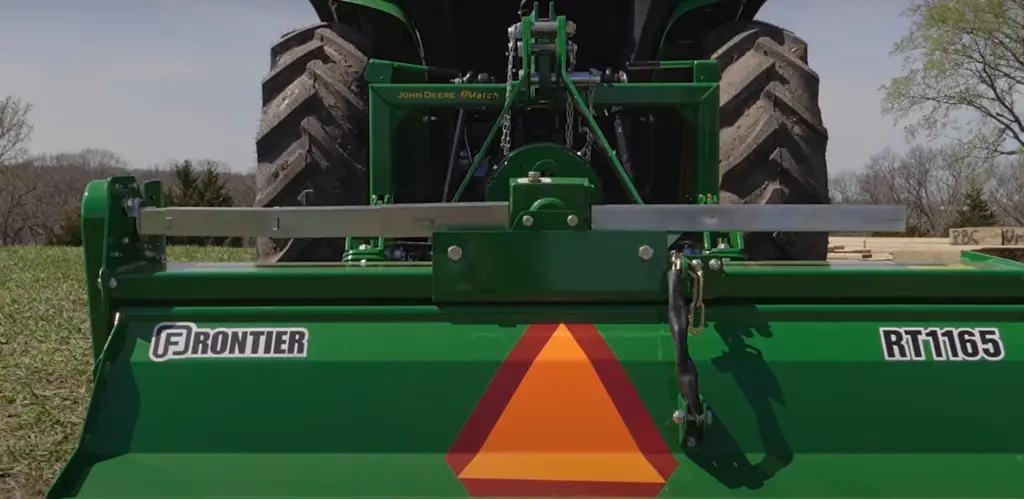
It’s also a good idea to keep an eye on the width of the furrow. If it starts to get too wide, you can turn off the tractor and use a shovel or hoe to remove some of the excess soil.
Continue with plowing
After you’ve made your first furrow,it’s time to keep going in the same direction. When you reach the other end of your garden, turn the tractor around and drive back in the opposite direction. This will create a second furrow that’s parallel to the first one.
Continue plowing until you’ve gone over the entire garden. If you need to take a break, make sure you put the tractor in neutral and set the parking brake.
As you’re plowing, keep an eye on the depth of the furrow. You want it to be deep enough to cover the roots of your crops, but not so deep that it’s difficult to plant them. This will ensure that you’re creating furrows that are the right depth for your crops.
Spread fertilizer
After you’ve plowed the entire area, it’s time to spread fertilizer. You can do this by hand or with a spreader. If you’re using a spreader, make sure to set it to the right setting for your fertilizer. Otherwise, you may end up applying too much or too little. Make sure you follow the instructions on the fertilizer package so that you don’t apply too much or too little. [3],[4]
Plowing the Garden by Hand
If you don’t have a tractor, you can still plow your garden by hand. This is a more time-consuming process, but it’s still doable. Manual plowing is only recommended for gardeners with small gardens who have the necessary strength for the task.
Use a spade to turn the soil up and create rows
Begin by driving the spade into the ground at one end of the garden bed. Use your foot to push the spade down and under the soil. Lean on the handle of the spade to lift up a section of soil. Then, move over a few inches and repeat this process until you’ve turned up a row of soil.
Make sure the turned up rows are spaced about a foot apart. You can use a hoe to loosen the soil in between the rows if necessary.
Rake the ground loose
After you’ve turned up the rows of soil, it’s time to rake the ground to loosen it up even more. This will make it easier for your plants to take root and grow.
Use a garden rake to lightly comb through the turned-up soil. Be careful not to compact the soil too much as you rake. Your main goal here is to break the lumps of soil up so that the ground is nice and loose.
Leave furrows for drainage
As you’re raking the ground, you should also create furrows for drainage. These furrows will help ensure that your plants have enough water and don’t get too wet.
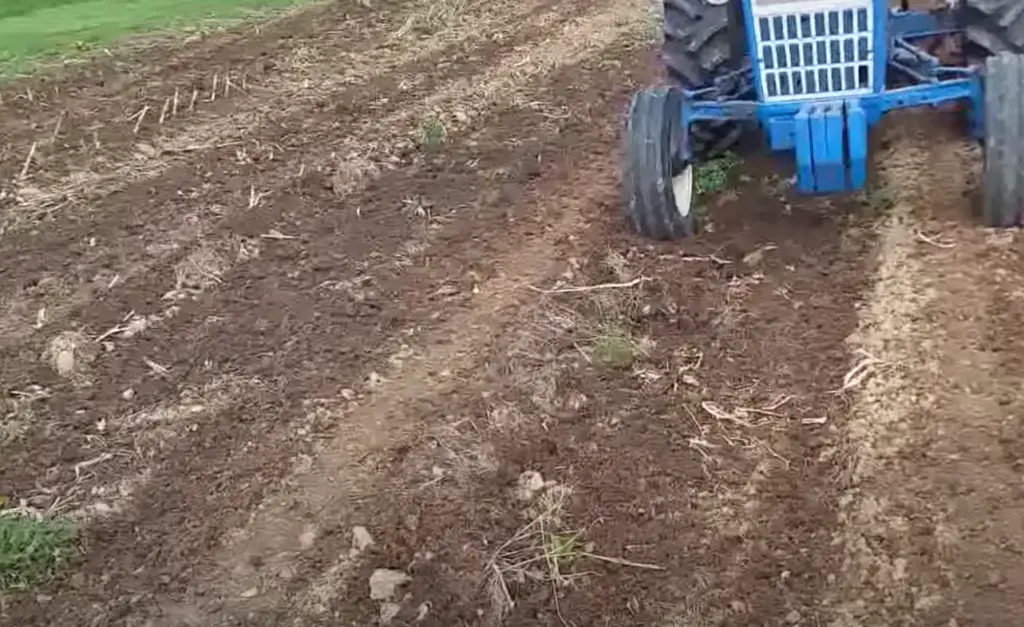
To create furrows, combine highs and lows as you rake. For example, you can take a section of soil towards you to create a mound. Then, rake the next section of soil away from you to create a furrow. Continue doing this until you’ve created furrows throughout your entire garden bed.
Remember to leave enough space between the furrows so that your plants have room to grow.[4]
Plowing Using Animal Force
An old-fashioned yet still popular method for plowing gardens is using animal force, such as with a horse or mule. If you decide to go this route, there are a few things to keep in mind. First, your animal will need to be properly trained and outfitted with the right gear. Second, you’ll need to make sure your garden plot is large enough to accommodate the turning radius of your animal. Third, you should be patient with an animal-powered plow as it will likely take longer than plowing with a tractor.Assuming you have all that taken care of, plowing with an animal is actually pretty straightforward.
Attach the plow to your animal
Of course, you’ll need to attach the plow to your animal before you can get started. The specifics of how to do this will vary depending on the type of plow and animal you’re using, so be sure to consult your owners manual or ask a knowledgeable friend for help if needed.
Usually, you will need to harness the collar around the animal’s neck, and then attach the plow to the harness using either a chain or a strap.
Plow in straight rows
Once the plow is securely attached, you’re ready to start plowing! Begin by driving your animal in a straight line down the length of your garden plot. As you go, the plow will cut through the soil, creating a furrow for planting seeds or seedlings.
If you need to turn around and head back the other direction, be sure to lift the plow out of the furrow before turning. Otherwise, you risk damaging both the plow and your garden plot.
Change plow blades during the process if possible
To ensure that your plow is working effectively, you should stop and change the blades periodically.
It’s also a good idea to check the condition of the blades regularly, as they can become dull or damaged over time. Replacing worn out blades will help you get the best possible results from your plowing. [4]
When Should You Plow Your Garden
Many gardeners wonder when the best time to plow their garden is. The answer to this question depends on a few factors, such as what type of soil you have and what type of plants you’re growing. Usually, gardeners plow their garden either in Fall or Spring.
Fall Plowing
The best time to plow your garden is in the fall, after the growing season is over.Plowing in the fall will help to break up any compaction that has occurred during the summer, and it will also help to incorporate any organic matter (such as leaves and mulch) into the soil. This will improve the drainage and structure of your soil, allowing winter rains to seep down more easily, resulting in healthier plants come spring.
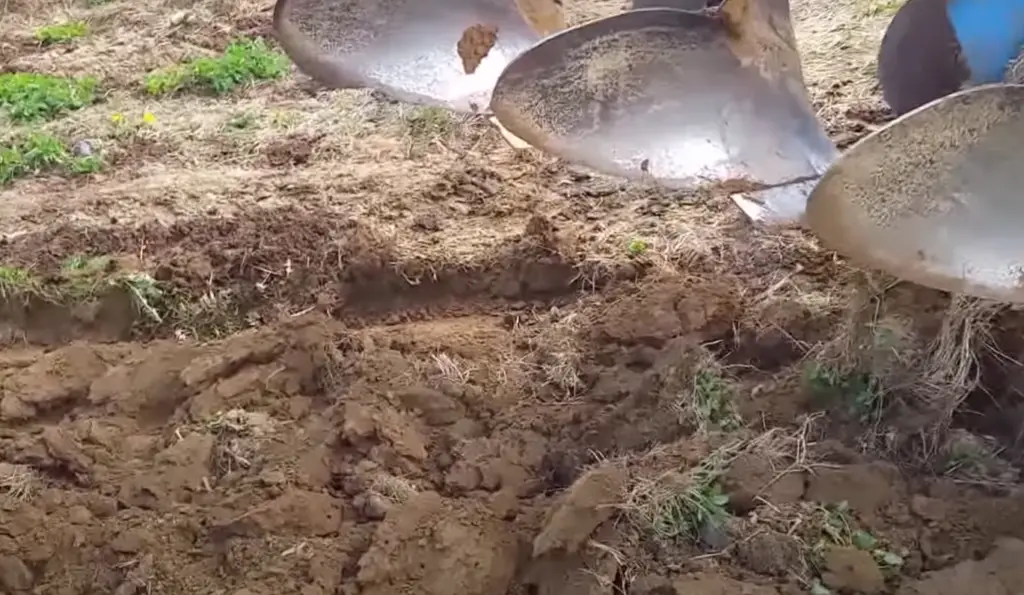
The main negative of fall plowing is the weather.
If you live in an area with a lot of rain, you may want to wait until the spring to plow your garden.Spring Plowing
Usually, spring plowing is done before the planting season begins. This allows the soil to settle and provides a smooth seedbed for planting. However, this also means you have to prepare a compost or fertilizer before you plow. The best time frame can vary depending on your location, but it’s usually around mid-March to early April.
If you live in an area with mild winters, you can plow your garden as late as February. But if you live in an area with harsher winters, it’s best to wait until March so that the frost has a chance to thaw out of the ground before you start turning it over. No matter when you plow, always be sure to check the forecast and avoid plowing if the soil is too soggy or too dry.
If you plan to plow in spring, you should keep an eye on soil conditions. It’s fine to start working as soon as the ground becomes soft enough to avoid compacting the soil.
For effective plowing, the ground should be wet and it should be able to crumble easily when you press your thumb into it. If the ground is too dry, it will create a dusty mess. And if it’s too wet, the soil will stick to your plow and make it difficult to turn.
Plowing in spring can also expose the larvae of harmful insects, such as cutworms and grubs, to predators. This can help reduce the population of these pests in your garden. [3]
Comparison of Different Techniques for Plowing a Garden
Plowing is an essential process for preparing a garden for planting. The technique used for plowing can affect the quality of the soil and the success of the crop. In this table, we compare various indicators of different techniques for plowing a garden.
| Plowing Technique | Depth of Plowing (inches) | Time Required (hours/acre) | Soil Compaction Level | Cost (USD/acre) |
|---|---|---|---|---|
| Traditional Plowing with a Moldboard Plow | 8-12 | 3-5 | High | 50-100 |
| No-Till Plowing with a Chisel Plow | 4-8 | 1-2 | Low | 20-40 |
| Rotary Plowing with a Tiller | 4-6 | 2-3 | Medium | 30-60 |
The table compares three different techniques for plowing a garden – traditional plowing with a moldboard plow, no-till plowing with a chisel plow, and rotary plowing with a tiller. The indicators compared are the depth of plowing, time required per acre, soil compaction level, and cost per acre.
Traditional plowing with a moldboard plow involves turning over the soil to bury weeds and previous crop residue. It requires the deepest plowing and is the most time-consuming, but it also causes the most soil compaction and is the most expensive.
No-till plowing with a chisel plow involves making small slits in the soil to plant seeds, leaving most of the previous crop residue on the surface. It requires the least amount of time and causes the least soil compaction, but it also requires the least amount of depth and may not be effective in burying weeds.
Rotary plowing with a tiller involves using a rotating blade to break up the soil and mix in previous crop residue. It requires a medium depth of plowing and is moderately time-consuming and expensive, but it also causes moderate soil compaction.
Overall, the choice of plowing technique depends on the specific needs of the garden and the preferences of the gardener.
FAQ
Is plowing bad for soil?
Plowing can be bad for soil if it is done excessively or without proper care. Over time, plowing can disturb the soil’s natural structure and make it more difficult for plants to grow. Additionally, plowing can lead to soil erosion if the ground is not properly protected from wind and rain.
To avoid these problems, it is important to plow only when necessary and to take care not to damage the soil. When done correctly, plowing can actually improve the quality of the soil by aerating it and adding organic matter.
How do you make a garden plow?
There are a few different ways that you can make a garden plow. One way is to take an old shovel and bend the blade so that it is at a 90 degree angle. Another way is to use a hoe and sharpen the blade so that it can be used for plowing.
If you want to purchase a garden plow, there are many different types available. You can find ones made of metal or plastic. Some have handles while others do not. There are also electric garden plows available, but these can be expensive.
How do you plow a field for the first time?
If you’re plowing a field for the first time, you’ll need to take some special considerations. First, you’ll need to investigate the area to make sure that there aren’t any buried objects, stones, or other things that could damage your equipment. Second, you’ll need to clear the area of any debris that could get caught in your plow. Once the field is level, you’ll need to mark out the area that you want to plow. This will help ensure that you don’t accidentally plow over something that you don’t want to.
Is plowing the same as tilling?
No, plowing is different from tilling in that it actually turns the soil over, whereas tilling only breaks up the topsoil. Plowing is a more thorough process and will help to aerate the soil better.
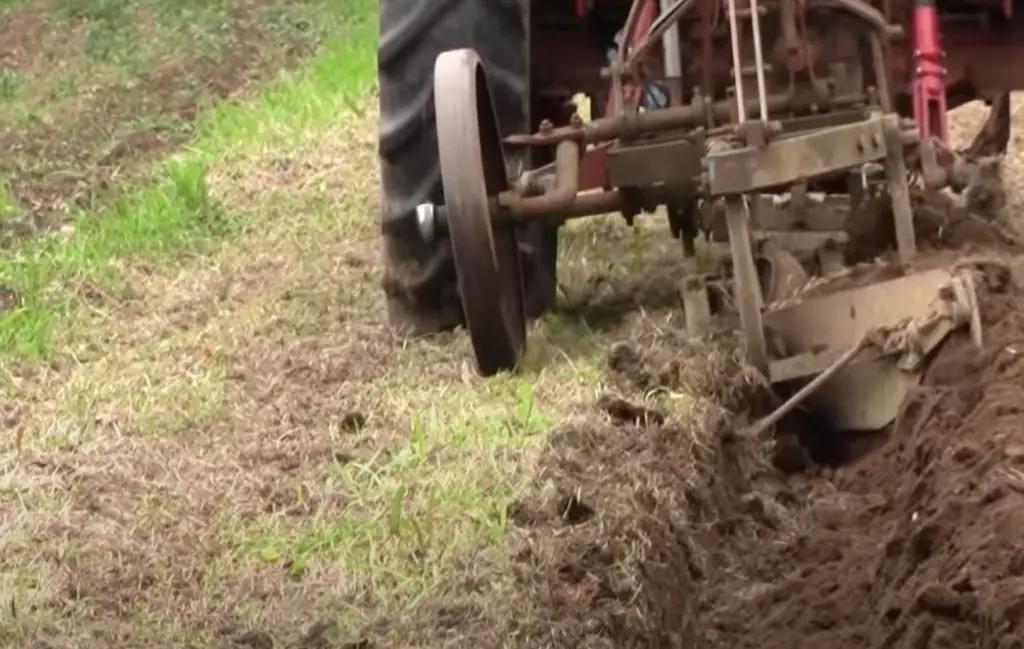
Tilling can be done by hand or with a machine, but plowing, more often than not, requires a machine. If you’re using a machine, make sure it’s properly calibrated before you start. You don’t want to damage your garden!
When should you plow the ground?
The best time to plow your garden is in the fall, after the growing season has ended. This gives the soil a chance to settle and provides you with a head start on next year’s planting.
If you live in an area with a lot of rainfall, it’s also a good idea to plow in the spring before planting. This will help ensure that your plants have enough drainage.
What are some tips for plowing a garden?
If you’re looking to plow your garden, there are a few things to bear in mind. First, make sure the ground is dry so that you don’t compact the soil. Second, use a sharp blade or chisel on your plow to ensure clean cuts through the soil. Finally, go slowly and be careful not to damage any plants or roots as you plow.
With these tips in mind, plowing your garden should be a breeze!
How do you prepare the soil before you start plowing?
The first step is to remove any rocks or debris that might be in the way. Once the area is clear, you’ll need to loosen up the soil so that the plow can do its job. This can be done with a shovel or a hoe.
Next, you’ll need to mark out the area that you want to plow. This will help you stay on track and avoid accidentally plowing over plants or areas that don’t need to be disturbed.
Now it’s time to start plowing! You’ll want to make sure that you’re using a sharp blade so that the process is as efficient as possible. If the blade isn’t sharp enough, it will just bounce off of the ground and won’t do a very good job of breaking up the soil.
Once you’ve finished plowing, you can smooth out the area with a rake. This will help prepare the soil for planting.
Is there a wrong or right way to plow a garden?
No, there is no wrong or right way to plow a garden. However, there are some tips that can help you get the best results. Soil type, garden size, and the type of plants you are growing will all play a role in how you plow your garden.
Here are a few tips to help you get started:
If you have a small garden, you can probably get away with using a hand tiller or even just a shovel.
For larger gardens, you will need something more powerful like a rototiller.
The type of soil in your garden will also affect how you plow it. Sandy soil is easier to work with than clay soil.
If you are growing delicate plants, be careful not to damage them when plowing.
Following these tips should help you get the best results when plowing your garden.
How do you decide when to plow your garden?
The best time to plow your garden is actually in the fall, after the growing season is over. Plowing in the fall will help to break up any compaction that has occurred during the summer, and it will also help to incorporate any organic matter (like leaves or grass clippings) into the soil. When the soil is wet, it’s the best time to plow.
If you didn’t get a chance to plow in the fall, you can do it in the spring before planting. Just be sure to wait until all danger of frost has passed.
What are the benefits of plowing a garden?
Plowing a garden can help to aerate the soil, which can improve drainage and root growth. It can also help to control weeds and prepare the soil for planting. Thus, plowing a garden can be beneficial for both the plants and the gardener.
When plowing a garden, it is important to avoid compacting the soil. This can be done by making sure that the blades of the plow are sharp and that the depth of the furrows is not too deep. In addition, it is important to avoid walking on wet soil, as this can also lead to compaction. Finally, it is important to leave enough space between furrows so that plants have room to grow.
When is the best time to plow a garden?
There is no definitive answer to this question as it depends on a number of factors, such as the type of plants you are growing and the climate in your area. However, in general, it is best to plow your garden when the soil is wet but not soggy. This will ensure that the soil is loose enough to be turned over easily, but not so wet that it sticks to your plow or gets clumpy.
If you are unsure about when the best time to plow your garden is, you can always ask a local gardening expert or check online forums for advice from other gardeners in your area.
Why do farmers plow at night?
Farmers plow at night so they can get an early start in the morning. By plowing at night, they can avoid the heat of the day and the insects that are attracted to the smell of fresh dirt. In addition, plowing at night allows the farmers to get a head start on their workday.
Farmers have to be careful when they plow at night though. They need to make sure that their headlights are turned on so that they can see what they’re doing. They also need to be aware of any animals that might be in their way. If you’re planning on plowing your garden, it’s best to do it during the daytime so you can avoid any potential hazards.
Does plowing get rid of weeds?
Weeds are pesky little buggers that seem to pop up no matter what you do. You could have the neatest, most well-manicured garden on the block, but chances are there will still be a few weeds here and there. Plowing can help get rid of some of them, but it’s not a guarantee. Weeds are pretty resilient and can often come back even after being plowed over. If you’re really looking to get rid of all your weeds, you might want to consider using a herbicide or weed killer in addition to plowing.
What to use if you don’t have a tiller?
If you don’t have a tiller, you can use a spade or a shovel to loosen the soil. You’ll need to do this by hand, which will take some time and effort. But it’s definitely doable!
To make things easier, you can also use a garden hoe to loosen the soil. This will make the job go faster and be less strenuous on your body. Just be sure to use a hoe that’s designed for gardening – not one that’s meant for breaking up concrete!
Once you’ve loosened the soil, you can then use a rake to level it out. This will help ensure that your garden is nice and level before you start planting anything.
Is tilling a garden necessary?
This is a great question with no easy answer. Tilling can help break up compacted soil, which allows water and air to better penetrate the root zone. It also helps to control weeds by bringing buried weed seeds to the surface where they can be exposed to light and killed. However, tilling also has its drawbacks. It can damage delicate roots, promote erosion, and lead to soil compaction if done improperly.
Ultimately, the decision of whether or not to till your garden comes down to a balance of pros and cons. If you’re struggling with compacted soil or persistent weeds, tilling may be a good option for you. Just be sure to take care when doing it so you don’t end up doing more harm than good.
Useful Video: How do cold temperatures affect plants?
Conclusion
As you can see, there’s nothing to plow through a garden! With the right tools and some elbow grease, you can have your garden looking perfect in no time. Plowing helps to break up compaction, which can improve drainage and aeration in the soil. It also helps to control weeds by buried weed seeds deep underground where they cannot germinate. In addition, plowing can help to mix organic matter into the soil, which can improve its fertility and structure.
In this article we have covered how to plow a garden using a tractor, manually or with the help of an animal. We also discussed the different types of plows and how to use them. So next time you’re feeling overwhelmed by your garden, remember these tips and get to work! You’ll be done before you know it. Happy plowing!
References:
- https://www.forigo.it/en/news/what-is-plowing
- https://toptillers.com/tilling-vs-plowing-understanding-difference/
- https://www.newlifeonahomestead.com/how-to-plow-a-garden/
- https://www.wikihow.com/Plow-a-Field/





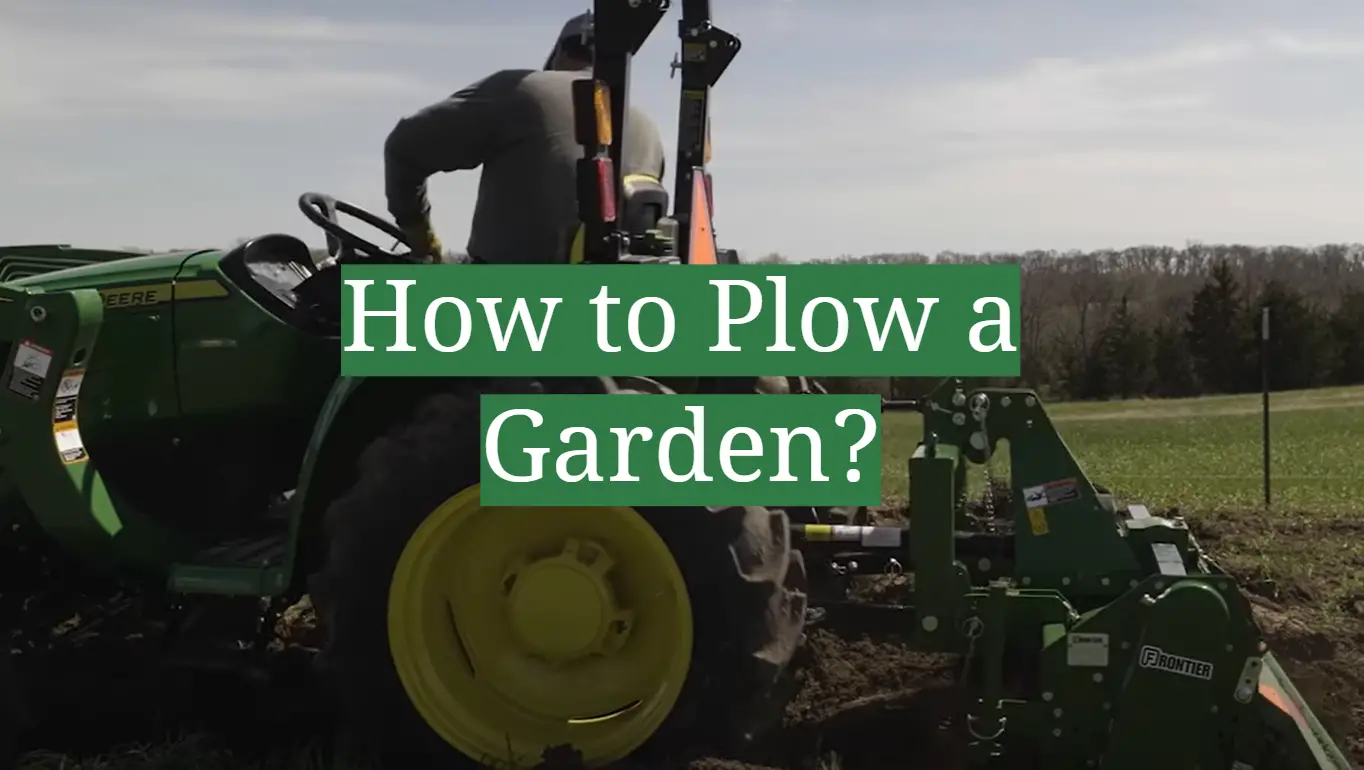




Leave a Reply
View Comments